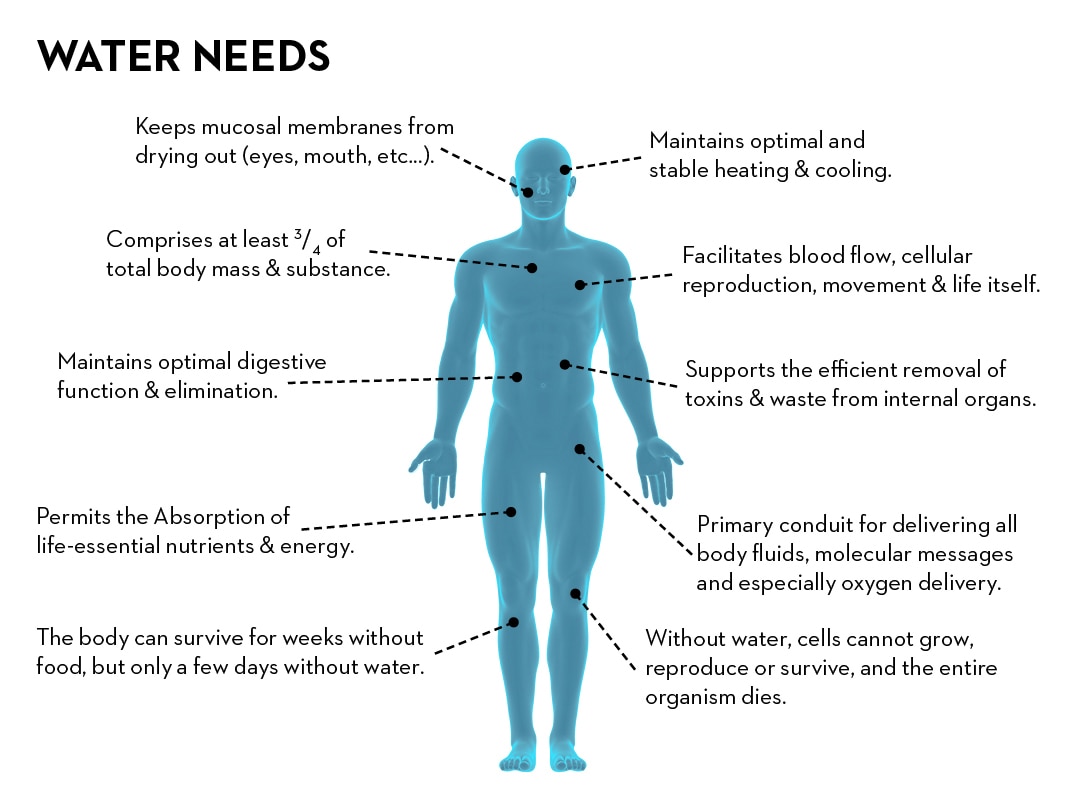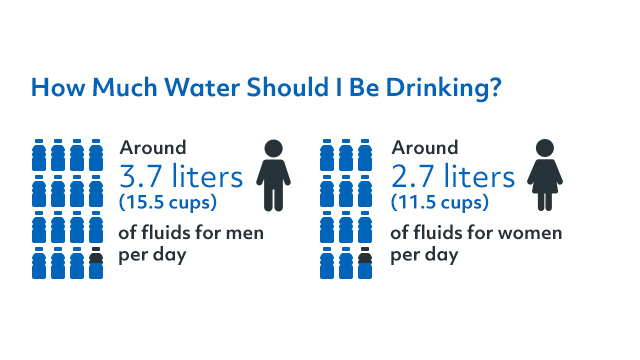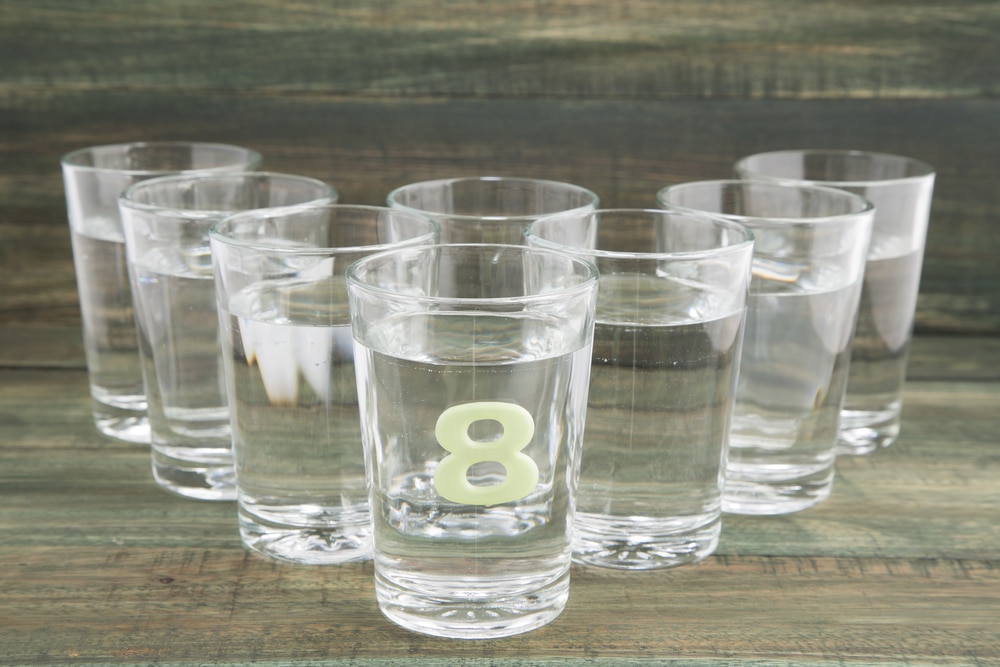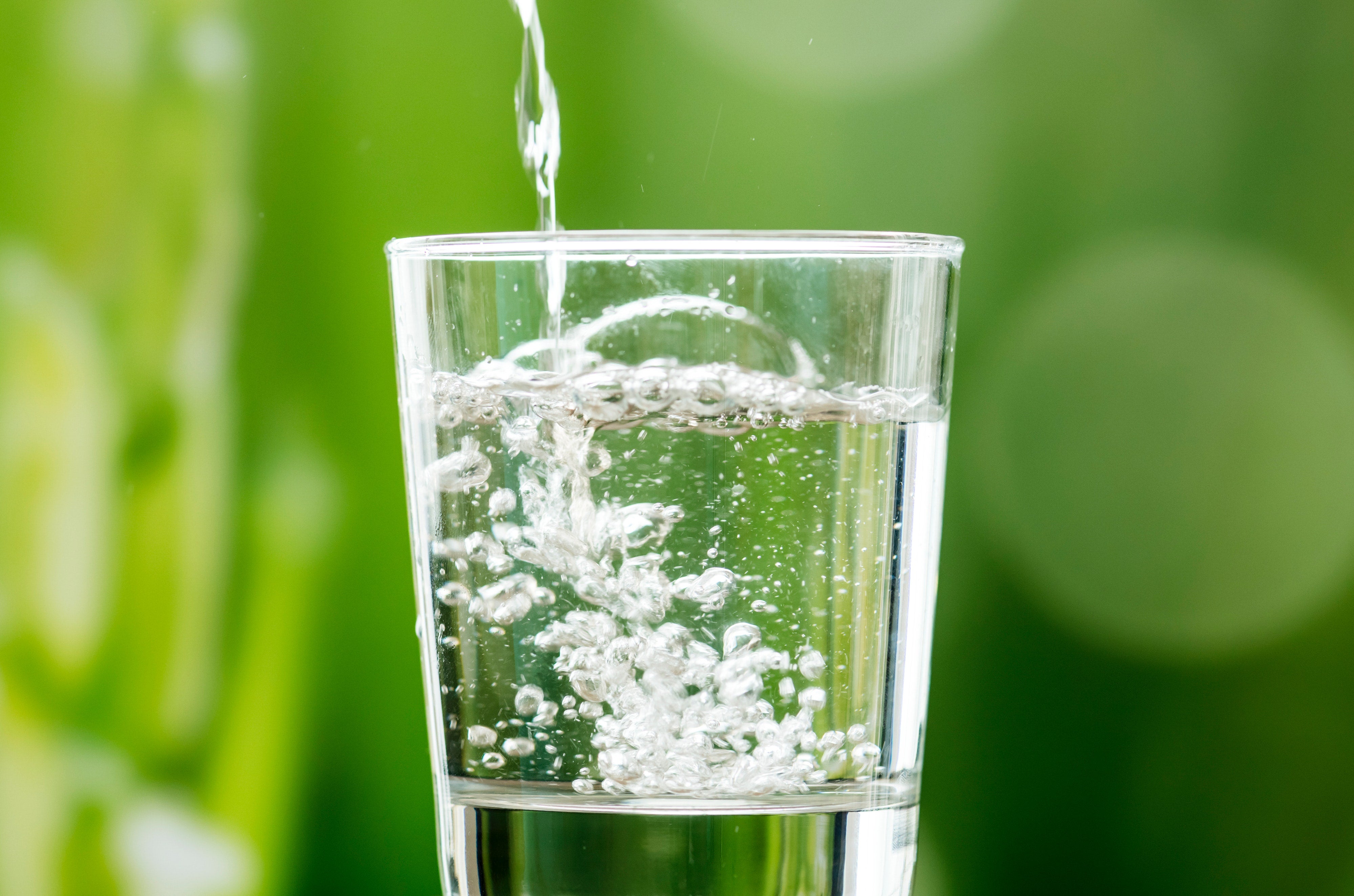Water is essential for maintaining good health, but how much water should you drink each day? This question has sparked much debate and confusion among individuals seeking to optimize their hydration levels. In this comprehensive guide, we will delve into the various factors that influence your daily water intake requirements, dispel common myths, and provide practical tips for staying adequately hydrated.
Your Body’s Water Needs

Water is a fundamental element of life, playing crucial roles in various bodily functions. Understanding your body’s water needs involves recognizing the factors that influence hydration requirements and tailoring your fluid intake accordingly.
Factors Influencing Water Requirements
1. Health Status:
Your overall health condition can significantly impact your hydration needs. Certain medical conditions, such as kidney disease or diabetes, may necessitate increased or restricted fluid intake. Additionally, medications like diuretics can affect fluid balance and require adjustments in hydration levels.
2. Activity Level:
Physical activity, particularly intense exercise or activities that induce sweating, increases your body’s demand for water. When you sweat, you lose not only water but also electrolytes essential for maintaining proper hydration levels. Replenishing fluids during and after exercise is crucial for preventing dehydration and supporting optimal performance.
3. Environmental Factors:
Environmental conditions, including climate, temperature, and altitude, play a significant role in determining hydration requirements. Hot and humid weather accelerates fluid loss through sweating, necessitating increased water intake to prevent dehydration. Similarly, high-altitude environments can contribute to dehydration due to increased respiratory water loss and decreased thirst sensation.
4. Age and Weight:
Age and weight are additional factors that influence water needs. Children have higher water requirements per unit of body weight compared to adults due to their higher metabolic rate and greater surface area relative to body mass. Similarly, individuals with higher body weight may require more fluids to support metabolic processes and maintain proper hydration levels.
5. Lifestyle Habits:
Certain lifestyle factors, such as alcohol consumption and caffeine intake, can affect hydration status. Alcohol acts as a diuretic, increasing urine production and potentially leading to dehydration if not adequately compensated with water intake. Caffeine, found in coffee, tea, and energy drinks, also has diuretic properties but is generally considered hydrating when consumed in moderation.
Tailoring Fluid Intake to Individual Needs
Understanding the diverse factors that influence hydration requirements allows individuals to tailor their fluid intake to meet their specific needs. This personalized approach to hydration ensures that individuals maintain optimal fluid balance and support overall health and well-being.
Practical Tips for Meeting Your Hydration Needs:
- Listen to your body’s thirst cues and drink water regularly throughout the day, especially during periods of increased fluid loss or physical activity.
- Carry a reusable water bottle with you to ensure easy access to water wherever you go.
- Incorporate hydrating foods into your diet, such as fruits and vegetables with high water content.
- Monitor urine color as a simple indicator of hydration status, aiming for pale yellow or colorless urine.
- Adjust your fluid intake based on individual factors such as health status, activity level, and environmental conditions.
Guidelines for Daily Water Intake

Determining the appropriate amount of water to drink each day is essential for maintaining optimal hydration levels and supporting overall health. While individual water needs may vary based on factors such as age, gender, activity level, and environmental conditions, there are general guidelines provided by health organizations to help individuals meet their hydration requirements.
Recommendations by Health Organizations
1. U.S. National Academies of Sciences, Engineering, and Medicine:
According to the U.S. National Academies of Sciences, Engineering, and Medicine, an adequate daily fluid intake for adults is approximately 15.5 cups (3.7 liters) for men and 11.5 cups (2.7 liters) for women. This recommendation includes fluids from both beverages and food sources.
2. Considerations for Special Populations:
- Pregnant and breastfeeding women may require additional fluids to support the growth and development of the fetus or infant. It’s important for expectant and nursing mothers to consult with healthcare professionals to determine their specific hydration needs.
- Athletes and individuals engaging in vigorous physical activity may need to increase their fluid intake to compensate for fluid loss through sweat. Hydration strategies before, during, and after exercise are essential for optimizing performance and preventing dehydration.
- Older adults may have reduced thirst sensation and kidney function, making them more susceptible to dehydration. Encouraging older individuals to drink water regularly and consume hydrating foods can help prevent dehydration and associated health issues.
Tailoring Water Intake to Individual Requirements
While the general guidelines provided by health organizations serve as a useful starting point, it’s important to recognize that individual water needs may vary based on various factors. Individuals should consider the following factors when determining their daily water intake:
1. Health Status:
Certain medical conditions, such as kidney disease or diabetes, may require adjustments in fluid intake. Individuals with specific health concerns should consult with healthcare professionals to determine their optimal hydration needs.
2. Activity Level:
Physical activity and exercise increase fluid requirements due to sweating and increased metabolic activity. Athletes and active individuals should drink water before, during, and after exercise to maintain hydration and support performance.
3. Environmental Conditions:
Hot and humid weather increases fluid loss through sweat, necessitating increased water intake to prevent dehydration. Similarly, individuals living at high altitudes may experience increased respiratory water loss and should increase their fluid intake accordingly.
4. Thirst and Urine Output:
Paying attention to thirst cues and monitoring urine output can provide valuable insights into hydration status. Thirst is the body’s natural mechanism for signaling the need for fluids, while pale yellow or colorless urine indicates adequate hydration.
Practical Tips for Meeting Hydration Needs
To ensure adequate hydration and meet daily water intake recommendations, individuals can incorporate the following practical tips into their daily routines:
- Carry a reusable water bottle and sip water throughout the day to stay hydrated.
- Incorporate hydrating foods such as fruits, vegetables, and soups into meals and snacks.
- Set reminders to drink water at regular intervals, especially in hot or humid weather or during physical activity.
- Monitor urine color as a simple indicator of hydration status and adjust fluid intake accordingly.
Debunking the “8 Glasses a Day” Myth

The notion that individuals should drink eight glasses of water per day, often referred to as the “8×8 rule,” has been perpetuated for decades as a simple guideline for maintaining hydration. However, this recommendation lacks scientific evidence and oversimplifies the complex factors influencing hydration needs. Let’s delve deeper into why the “8 glasses a day” myth is not a one-size-fits-all approach to hydration.
Origins of the 8×8 Rule
The origins of the “8 glasses a day” recommendation can be traced back to a misinterpretation of a statement made by Dr. Frederick J. Stare, a prominent nutritionist, in the 1940s. Dr. Stare suggested that the average adult should consume about 8 cups of fluid daily, but he also noted that much of this fluid could be obtained from foods and beverages other than water. Over time, this recommendation morphed into the widely circulated belief that individuals should drink precisely eight glasses of water each day.
Lack of Scientific Evidence
Despite its widespread acceptance, the “8 glasses a day” rule lacks scientific backing. Research has failed to identify a specific daily water intake requirement applicable to all individuals. Hydration needs vary based on factors such as age, gender, body weight, activity level, and environmental conditions. Additionally, individual differences in metabolic rate, kidney function, and fluid balance further complicate the establishment of a universal guideline.
Tailoring Water Intake to Individual Needs
Rather than adhering rigidly to a predetermined number of glasses, individuals should focus on listening to their bodies’ thirst cues and adjusting fluid intake accordingly. Thirst is the body’s natural mechanism for signaling the need for fluids, and drinking water when thirsty is an effective way to maintain hydration. Furthermore, paying attention to factors such as physical activity, climate, and overall health status can help individuals gauge their hydration needs more accurately.
Practical Hydration Strategies
To ensure adequate hydration without fixating on arbitrary numerical targets, individuals can adopt practical strategies tailored to their lifestyle and preferences:
- Carry a reusable water bottle and sip water throughout the day, especially during periods of increased fluid loss or physical activity.
- Incorporate hydrating foods such as fruits, vegetables, and soups into meals and snacks to supplement fluid intake.
- Monitor urine color as a simple indicator of hydration status, aiming for pale yellow or colorless urine.
- Pay attention to thirst cues and drink water whenever feeling thirsty, rather than forcing oneself to adhere to a predetermined quota.
Alternative Sources of Hydration

While water is the most straightforward option for staying hydrated, it’s essential to recognize that various beverages and foods can contribute to your daily fluid intake. Understanding these alternative sources of hydration allows individuals to diversify their fluid intake while still supporting optimal hydration levels.
Hydrating Beverages
Herbal Teas:
Herbal teas, such as chamomile, peppermint, and rooibos, provide a flavorful alternative to plain water. These caffeine-free options are hydrating and offer additional health benefits, including antioxidants and soothing properties.
Milk:
Milk is not only a source of hydration but also provides essential nutrients such as calcium, vitamin D, and protein. Both cow’s milk and plant-based alternatives like almond, soy, and oat milk can contribute to your daily fluid intake.
Fruit Juices:
While fruit juices contain natural sugars and should be consumed in moderation, they can be a refreshing and hydrating option. Opt for 100% fruit juice varieties without added sugars or dilute them with water to reduce sugar content.
Coconut Water:
Coconut water is a natural source of electrolytes, making it an excellent choice for rehydration after exercise or prolonged physical activity. It provides potassium, magnesium, and sodium, which are essential for maintaining electrolyte balance.
Electrolyte Drinks:
Electrolyte drinks, such as sports drinks or oral rehydration solutions, are specifically formulated to replenish electrolytes lost through sweat during intense exercise or illness. While these beverages can be beneficial in certain situations, they should not replace water as the primary source of hydration for most individuals.
Hydrating Foods
Fruits:
Many fruits have high water content, making them hydrating snacks. Watermelon, cucumber, strawberries, oranges, and grapes are particularly hydrating fruits that can contribute to your fluid intake while providing essential vitamins, minerals, and antioxidants.
Vegetables:
Vegetables such as celery, lettuce, spinach, and bell peppers are rich in water and fiber, making them excellent choices for hydration. Incorporating hydrating vegetables into salads, soups, and stir-fries is an easy way to boost your fluid intake.
Soups and Broths:
Soups and broths are not only comforting but also hydrating. Whether homemade or store-bought, soups made with water-based broths and plenty of vegetables provide fluids along with nutrients and flavor.
Caffeinated Beverages
While caffeinated beverages like coffee, tea, and soda can contribute to your daily fluid intake, it’s essential to consume them in moderation. Caffeine has diuretic properties, which means it can increase urine output and potentially lead to dehydration if consumed excessively. However, moderate consumption of caffeinated beverages can still contribute to overall hydration, particularly when paired with adequate water intake.
Signs of Adequate Hydration
Recognizing the signs of adequate hydration is essential for maintaining optimal fluid balance and supporting overall health and well-being. By understanding the indicators of proper hydration, individuals can ensure that they are meeting their body’s fluid needs and preventing dehydration.
Rarely Feeling Thirsty
Thirst is the body’s primary mechanism for signaling the need for fluids. One of the most straightforward signs of adequate hydration is experiencing infrequent feelings of thirst. If you rarely feel thirsty throughout the day, it is likely that you are adequately hydrated. However, it’s important to note that older adults and individuals with certain medical conditions may have reduced thirst sensation, so relying solely on thirst cues may not always be sufficient.
Color of Urine
Monitoring the color of your urine can provide valuable insights into your hydration status. Urine color is influenced by the concentration of waste products and the dilution of urine by fluids. Generally, pale yellow or colorless urine indicates adequate hydration, while darker yellow or amber-colored urine may suggest dehydration. Aim for urine that is light in color to ensure proper hydration.
Frequency of Urination
Another sign of adequate hydration is a regular frequency of urination. Healthy individuals typically urinate several times a day, with the exact frequency varying depending on factors such as fluid intake, diet, and individual physiology. If you are urinating regularly and producing an adequate amount of urine each time, it is likely that you are adequately hydrated.
Normal Electrolyte Levels
Electrolytes, such as sodium, potassium, and chloride, play a crucial role in maintaining fluid balance within the body. Adequate hydration helps regulate electrolyte levels and prevent imbalances that can occur with dehydration. Blood tests can assess electrolyte levels and provide insight into hydration status. Normal electrolyte levels indicate that you are maintaining proper hydration.
Overall Well-Being
Proper hydration is essential for supporting overall health and well-being. Adequately hydrated individuals often report feeling more energetic, alert, and focused throughout the day. Conversely, dehydration can lead to symptoms such as fatigue, headache, dizziness, and difficulty concentrating. By paying attention to how you feel physically and mentally, you can gauge whether you are adequately hydrated.
Risks of Overhydration
While staying adequately hydrated is essential for maintaining health, consuming too much water can lead to a condition known as overhydration or water intoxication. Understanding the risks associated with overhydration is crucial for preventing potential health complications.
Dilution of Electrolytes
Overhydration can disrupt the balance of electrolytes in the body, particularly sodium. Sodium is an essential electrolyte that helps regulate fluid balance and nerve function. When you drink excessive amounts of water, the sodium concentration in your bloodstream becomes diluted, a condition known as hyponatremia. This electrolyte imbalance can lead to symptoms such as nausea, vomiting, headache, confusion, seizures, and, in severe cases, coma or death.
Hyponatremia
Hyponatremia occurs when the sodium levels in the blood drop below normal levels due to excess water intake. This condition is particularly prevalent among endurance athletes who consume large volumes of water during prolonged exercise without adequately replacing electrolytes lost through sweat. Hyponatremia can also occur in individuals who drink excessive amounts of water for non-athletic reasons, such as in cases of psychogenic polydipsia (excessive thirst) or certain medical conditions.
Symptoms of Overhydration
Symptoms of overhydration vary depending on the severity of hyponatremia but may include:
- Nausea and vomiting
- Headache and confusion
- Muscle cramps and weakness
- Fatigue and lethargy
- Seizures and coma (in severe cases)
It’s essential to recognize these symptoms and seek medical attention promptly if you suspect overhydration or hyponatremia.
Risk Factors
Several factors can increase the risk of overhydration, including:
- Prolonged or intense exercise: Athletes participating in endurance events, such as marathons or ultramarathons, are at higher risk of hyponatremia due to excessive fluid intake without sufficient electrolyte replacement.
- Certain medical conditions: Individuals with kidney disorders, heart failure, or syndrome of inappropriate antidiuretic hormone (SIADH) are at increased risk of hyponatremia.
- Medications: Diuretics, antidepressants, and certain other medications can affect fluid balance and increase the risk of hyponatremia.
- Psychogenic polydipsia: Some individuals may develop a psychological compulsion to drink excessive amounts of water, leading to overhydration.
Prevention
To prevent overhydration and hyponatremia, it’s essential to:
- Drink fluids in moderation: Listen to your body’s thirst cues and drink water or other fluids when you are thirsty. Avoid excessive fluid intake, especially during short periods.
- Replace electrolytes: If engaging in prolonged or intense exercise, consider consuming electrolyte-rich sports drinks or snacks to replenish sodium and other electrolytes lost through sweat.
- Monitor symptoms: Be aware of the signs and symptoms of overhydration and hyponatremia, and seek medical attention if you experience symptoms such as nausea, headache, confusion, or swelling.
Practical Tips for Staying Hydrated

Maintaining proper hydration is essential for overall health and well-being. By adopting practical strategies and incorporating healthy hydration habits into your daily routine, you can ensure adequate fluid intake and support optimal hydration levels. Here are some practical tips to help you stay hydrated:
Carry a Reusable Water Bottle
Invest in a reusable water bottle and carry it with you wherever you go. Having easy access to water encourages regular hydration throughout the day, whether you’re at work, school, or running errands. Choose a bottle with a size and design that suits your preferences and make it a habit to refill it whenever it’s empty.
Set Reminders
Set reminders on your phone, computer, or smartwatch to prompt you to drink water at regular intervals. Incorporate hydration breaks into your daily schedule, especially if you tend to get caught up in activities and forget to drink. Setting alarms or alerts can help you stay mindful of your hydration goals and prevent dehydration.
Flavor Your Water
If plain water doesn’t appeal to you, try flavoring it with natural additives like lemon slices, cucumber slices, mint leaves, or berries. Infused water adds a refreshing twist to your hydration routine and makes drinking water more enjoyable. Experiment with different flavor combinations to find ones you love.
Eat Hydrating Foods
Incorporate hydrating foods into your diet to supplement your fluid intake. Fruits and vegetables with high water content, such as watermelon, cucumber, oranges, strawberries, and spinach, can contribute to your overall hydration. Include these foods in meals and snacks to boost your fluid intake while reaping the nutritional benefits they provide.
Monitor Urine Color
Pay attention to the color of your urine as a simple indicator of hydration status. Aim for urine that is pale yellow or colorless, which typically indicates adequate hydration. Dark yellow or amber-colored urine may signal dehydration, prompting you to increase your fluid intake.
Drink Before You’re Thirsty
Don’t wait until you feel thirsty to drink water. By the time you experience thirst, your body may already be in a state of mild dehydration. Instead, sip water regularly throughout the day, even if you don’t feel thirsty. Keeping hydrated helps maintain optimal bodily functions and supports overall health.
Hydrate Before, During, and After Exercise
Before engaging in physical activity, drink water to ensure you’re adequately hydrated. During exercise, sip water at regular intervals to replace fluids lost through sweat and prevent dehydration. After your workout, continue hydrating to replenish fluids and support recovery. Electrolyte-rich sports drinks may be beneficial for intense or prolonged exercise sessions.
Limit Dehydrating Beverages
Limit the consumption of beverages that can contribute to dehydration, such as caffeinated drinks and alcohol. While moderate intake of coffee, tea, and alcoholic beverages is generally acceptable, excessive consumption can have diuretic effects and increase fluid loss. Balance these beverages with adequate water intake to maintain hydration.
Conclusion
Determining how much water to drink each day is not a one-size-fits-all endeavor. While general guidelines provide a helpful starting point, it’s essential to consider individual factors and listen to your body’s cues for thirst and hydration. By staying mindful of your fluid intake and adopting healthy hydration habits, you can support your overall well-being and maintain optimal hydration levels. Remember, water is not just a beverage—it’s a vital nutrient essential for sustaining life. Cheers to staying hydrated and healthy!





